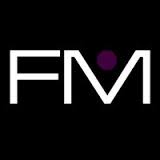
The following is a guest post from fnBlog Contributor Morgan Linton, Founder of Fashion Metric. This post, originally posted on Medium.com
Some say .COM is dead, others say it will live forever, here’s why I think both are right…
In case you missed the memo, this is a big year for the Internet. Over a thousand new domain extensions are hitting the market which means you’ll start to see people branding around extensions like .XYZ, .APP, .NYC, .BUZZ, and many more. Gone are the days where owning a .COM, .NET, and .ORG meant you had locked down your brand name online.
1993
The year is 1993. Jurassic Park just hit the theaters and it’s a hit, dinosaurs are in. Toronto gets a basketball team and puts out a nationwide poll to name them, top choice — The Raptors. Looking up information for most people means either using the Encyclopedia Britanica on CD-ROM or going to the local library. Domain names exist but the Internet itself is still very nascent. A graphical web browser called “Mosaic” is released making the web accessible in a whole new way. More people use America Online than surf the web, oh, and there’s no such thing as Google.
1998
Boom! This Internet thing is popular and now lightning-fast thanks to hot new technology like 56K modems. A war had actually broken-out between competing standards with US Robotics backing X2 and Rockwell and Lucent backing K56flex (read more).
A small group of people have been buying domain names over the last few years. Their friends and family think they’re crazy, who would ever want to buy a domain name?
Early investors like Rick Schwartz and the Castello Brothers are buying domains and amassing very meaningful portfolios. It’s not just individual investors and small groups buying, Fortune 500 companies are getting in on the action and claiming their own plots of digital land.
2001
Fun time is over, the .COM bubble had burst. Huge sites like Pets.com that everyone thought would be around forever crashed and burn. Internet Startups had gone from hot to, well, not. All those crazy people who bought domains were thought to be even crazier.
People start dumping .COM domains leading to a new opportunity to get in at the ground floor, again. Most people want nothing to do with the .COM bust, and like most markets, this is where some people saw a real opportunity to own Internet real estate.
Investors like Frank Schilling jumped on the opportunity and end-up cashing in on one of the biggest real estate markets the world still has never heard of. The playing field was wide open and individuals had the same access to domains as Fortune 500 companies, once again, both bought domains.
2004
A startup called “Facebook” (strange name right?) launches and connects college students in a whole new way. Adults don’t get it just like many of us now don’t get Snapchat.
All those people who bought domain names in the 90’s or early 2000’s are finding that many .COMs have built-in traffic. With more and more people using the Internet, more people are typing what they are looking for in the URL bar of their browser. Soon owning a domain name like Cars.com meant getting tens of thousands of visitors/month or more, all for free.
The concept of “Domain Parking” is hotter than ever within a small niche. More and more “Parked” pages are appearing. These parked pages are full of links and with the natural traffic domain are getting, some people (and big companies) are making a small fortune.
2007
Steve Jobs announces that Apple is entering the phone market. The iPhone is insanely expensive and many people think it’s going to be a big failure and distraction for Apple.
In the domain name world .COMs are now regularly selling for hundreds of thousands of dollars. Millions of dollars in domains are sold each week, some owned by individual investors, others owned by large companies, others owned by lucky people who may have bought one or two names many years ago.
While domain sales are healthy, domain parking is not. PPC payouts are the lowest they have ever been and type-in traffic is also declining. A new era of startup energy is spreading, NYC joins Silicon Valley as a top startup destination.
2008
A new domain extension hits the market — .ME. Assigned to the country of Montenegro in 2007, an incredible team is bringing .ME to the masses, they are targeting startups and innovators, soon startups like About.me will raise over $5M and companies Facebook (FB.me), WordPress (WP.me) and Time Magazine (Ti.me) will embrace this new extension.
A cool new service called “Bitly” launches making it easy to shorten URLs. They are one of the first companies to brand around a “domain hack” where the extension, “.ly” in this case, is used in the name itself.
While Bit.ly took-off in an 140-character-friendly world, brands become more and more comfortable stepping outside of the standard .COM, .NET, .ORG.
It’s official, the Internet, and the way people think about branding online, is changing.
2010
.CO launches and shows the world that a completely new domain extension can see strong traction. Startups instantly connect with .CO and over 1M .CO domains are sold within the first year.
Some startups change their brand from a two-word .COM to a one-word .CO to get the domain they always wanted.
A big hoopla is started about “lost traffic” to .COM for people accidentally typing in the .COM rather than the .CO. As you can imagine, everyone in the .COM camp says there’s no way to build a real brand on .CO, startups and investors say otherwise.
Still the market is polarized, many startups still stick to .COM and won’t budge, investors are split as well. Companies like Google are changing the way browsers work, now when people enter a word or phrase it searches rather than going to the corresponding .COM. Direct navigation traffic, that is people typing in a domain name directly into the browser is declining.
2012
Startups building their brands on .CO, .ME, .IO and other non-.COMs are raising millions. Brands like HelloBrit.com rebrand to Brit.co, BarkBox.com rebrands to Bark.co, at the same time, .IO is now on center stage at venues like TechCrunch Disrupt. Intercom.io raises $1M, little do they know they are only two years away from raising $23M.
Still, there are plenty of people who say go .COM or go home. Apps are more popular than ever, the notion of ranking well in the app store becomes increasingly important.
For some companies it’s more important to rank well in the app store than on Google. Meanwhile, in the background, direct navigation traffic, that is people typing in a domain name directly into the browser is continuing to decline.
A company called “Donuts” (donuts.co) raises $100M to buy tons of new gTLDs. Most people don’t even understand what they are doing, heck most people don’t know what a gTLD is. Donuts begins building an empire.
A buzz is starting, the new TLDs are coming.
2013
While there is plenty of excitement around the new TLDs there are also plenty of problems. ICANN keeps seeing delays in the new gTLD process and it’s only getting worse. The general public has now heard about new gTLDs but they don’t really know how many there are, when they’re coming out, or how they buy them.
A majority of the web browsers on the market now no longer direct to you to a .COM when you type a single word or phrase into your browser’s URL bar. Direct navigation traffic continues to drop. There are still a few hundred people around the world who continue to make money parking domains, but as traffic and revenue decline people start to look at other opportunities.
Donuts has been busy and by the end of 2013 they have locked-down more new extensions that any other company in the world. A new conference called NamesCon dedicated to Internet naming is announced for early 2014.
The buzz is growing and a massive polarization is taking place within the domain industry, on one side are the proponents of the new gTLDs, on the other side are the .COM loyalists who can’t imagine a world where .COM is not king. One side thinks the new domain extensions will be the biggest flop the Internet has ever seen, the other thinks it’s a goldmine. The general public still doesn’t quite know what’s going on, but most people have read at least one or two articles about the new gTLDs.
My Dad calls me on the phone in December, “Morgan, what do you think of these new domain extensions?”
2014
.XYZ, a new TLD operated by an entrepreneur named Daniel Negari takes center stage at NamesCon. Daniel is 27 years-old and he has big goals for 2014 — he predicts over 1M .XYZ registrations in the first year. For years Internet real estate has been controlled by large companies like Verisign and Neustar, now entrepreneurs like Daniel are stepping in, they see the world differently, the Internet landscape is changing and there’s no looking back.
January 29th 2014 – seven of Donuts new domain extensions hit the market, .BIKE, .GURU, .CLOTHING, .HOLDINGS, .PLUMBING, .SINGLES, and .VENTURES are now available for registration…the wait is over, the new gTLDs are here.
Of course as with most things in life, only time will tell but as Einstein said,“We can’t solve problems by using the same kind of thinking we used when we created them.”
Want to learn more about Morgan Linton? Check out Morgan Linton’s website or connect with them on Twitter @morganlinton






